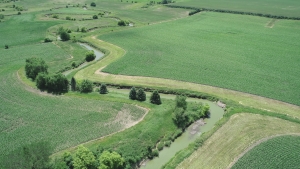Buffer Program Update
Official Notice: Proposed Revisions to Buffer Program Procedures
The current procedures were adopted in 2017, to support the implementation of the Riparian Protection and Water Quality Practices Statute (Minn. Stat. § 103F.48), commonly referred to as the Buffer Law. These procedures establish a consistent framework for implementation by soil and water conservation districts, as well as counties and watershed districts that have assumed jurisdiction.
Following legislative amendments to the statute in 2024, BWSR has revised the procedures to ensure alignment with current law. Concurrently, BWSR has incorporated updates and refinements informed by program implementation experience. The revised procedures have been reorganized into a series of renumbered chapters and updated for clarity and improved cross-referencing.
Two new procedures have been added as part of this revision:
Procedure No. 8: Implementation of Jurisdictional Responsibilities
Procedure No. 10: Revoking Jurisdiction of a County or Watershed District
The proposed revisions to the Buffer Program procedures can be found here (pdf)

